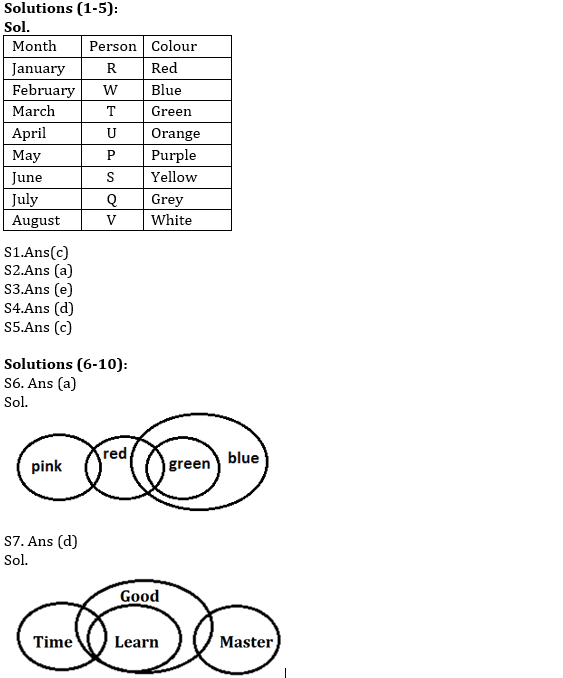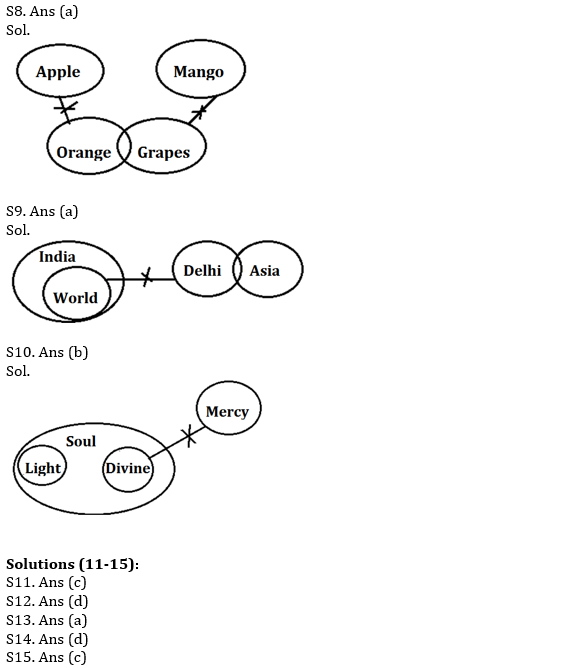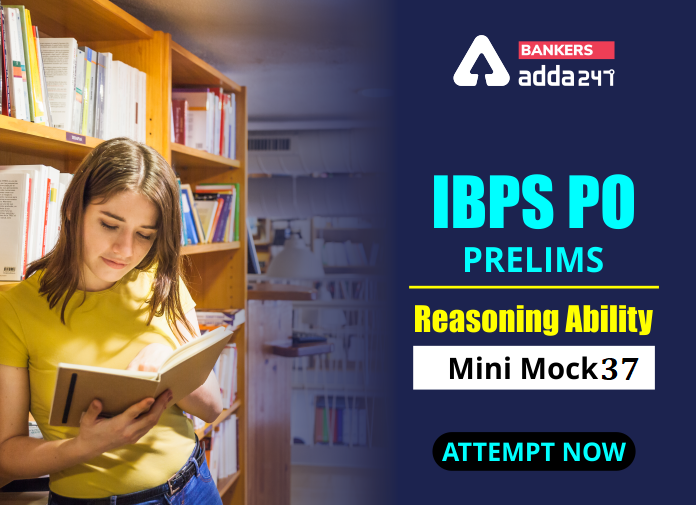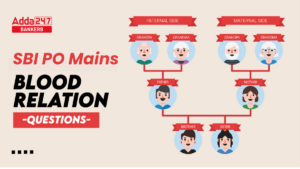Table of Contents
Directions (1-5): Study the information carefully and answer the questions given below.
Eight persons i.e. P, Q, R, S, T, U, V and W are born in different months i.e. January, February, March, April, May, June, July and August. Each of them likes different colours i.e. Red, White, Grey, Green, Purple, Orange, Yellow and Blue. All information is not necessarily in the same order.
Three persons born between R and the one who likes Purple, both persons born in month having 31 days. Q born in July and likes Grey. The person who likes Green born just before the one who likes Orange. R does not like Orange. Only two persons born between T and the one who likes Yellow. Equal number of persons born before the one who likes Blue and after the one who likes Grey. T born in month having 31 days and before the person who likes Yellow. U born before S and after W but not just before and after. T does not born in May. P born in the month having 31 days and does not like Red. Two persons born between P and the one who likes White. S does not like White.
Q1. How many persons were born in between W and Q?
(a) Five
(b) Two
(c) Four
(d) Three
(e) None
Q2. T born in which of the following month?
(a) March
(b) April
(c) May
(d) January
(e) None of these
Q3. Who among the following person were born in May?
(a) S
(b) U
(c) W
(d) R
(e) None of these
Q4. Who among the following person like Orange colour?
(a) P
(b) S
(c) T
(d) U
(e) None of these
Q5. Which of the following combination is true?
(a) S-Red
(b) V-Grey
(c) P-Purple
(d) W-Red
(e) Q-White
Directions (6-10): In each of the questions given below some statements are followed by some conclusions. You have to take the given statements to be true even if they seem to be at variance from commonly known facts. Read all the conclusions and then decide which of the given conclusions logically follows from the given statements disregarding commonly known facts.
Q6. Statements:
All green is blue.
Only a few red is green.
Only a few pink is red.
Conclusions:
I. Some pink is green is a possibility.
II. Some red is blue.
(a) Both I and II is true
(b) Only I is true
(c) Only II is true
(d) Either I or II is true
(e) Neither I nor II is true
Q7. Statements:
Some time is learn.
All learn is good.
Only a few good is master.
Conclusions:
I. Some master is time.
II. No time is master.
(a) Both I and II is true
(b) Only I is true
(c) Only II is true
(d) Either I or II is true
(e) Neither I nor II is true
Q8. Statements:
Some orange is grapes.
No apple is orange.
No mango is grapes.
Conclusions:
I. Some grapes is not apple.
II. Some orange is not Mango.
(a) Both I and II is true
(b) Only I is true
(c) Only II is true
(d) Either I or II is true
(e) Neither I nor II is true
Q9. Statements:
All world are india.
Only a few asia is delhi.
No delhi is world.
Conclusions:
I. Some india is asia is a possibility.
II. Some asia is not world.
(a) Both I and II is true
(b) Only I is true
(c) Only II is true
(d) Either I or II is true
(e) Neither I nor II is true
Q10. Statements:
Only soul is light
No divine is mercy.
All divine is soul.
Conclusions:
I. Some soul is not mercy.
II. All light is mercy is a possibility.
(a) Both I and II is true
(b) Only I is true
(c) Only II is true
(d) Either I or II is true
(e) Neither I nor II is true
Directions (11-15): In these questions, relationship between different elements is show in the statements. The statements are followed by conclusions. Study the conclusions based on the given statements and select the appropriate answer:
Q11.

(a) Both conclusions I and II are true
(b) Either conclusion I or II is true
(c) Only conclusion I is true
(d) Neither conclusions I nor II is true
(e) Only conclusion II is true
Q12.

(a) Both conclusions I and II are true
(b) Only conclusion II is true
(c) Neither conclusion I nor II is true
(d) Either conclusions I or II is true
(e) Only conclusions I is true
Q13.

(a) Both conclusion I and II are true
(b) Either conclusion I or II is true
(c) Neither conclusion I nor II is true
(d) Only conclusion I is true
(e) Only conclusion II is true
Q14.

(a) Only conclusion II is true
(b) Either conclusion I or II is true
(c) Both conclusion I and II are true
(d) Neither conclusion I nor II is true
(e) Only conclusion I is true
Q15.

(a) Neither conclusion I nor II true
(b) Both conclusions I and II are true
(c) Only conclusion II is true
(d) Either conclusion I or II is true
(e) Only conclusion I is true
Practice More Questions of Reasoning for Competitive Exams:
Solutions


Download PDF of this Reasoning Quiz for IBPS PO 2020
Practice with Crash Course and Online Test Series for IBPS PO Prelims:




 GA Capsule for SBI Clerk Mains 2025, Dow...
GA Capsule for SBI Clerk Mains 2025, Dow...
 The Hindu Review October 2022: Download ...
The Hindu Review October 2022: Download ...
 Important Blood Relation Questions for S...
Important Blood Relation Questions for S...





